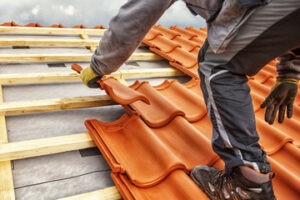New windows will not only make your home look more attractive, but can also add resale value. In addition, they can offer safety benefits.

Many Replacement Windows Massachusetts are built to be energy efficient. This can help to reduce the cost of heating and cooling your home. Some even come with a lifetime warranty.
Energy-efficient replacement windows can significantly reduce energy bills and make your home more environmentally friendly. Older windows tend to let in cold air during the winter and hot air during the summer, forcing your heating and cooling system to work overtime. Energy-efficient replacement windows, however, prevent this from happening, so you can save money both now and in the future.
One of the most important aspects of energy efficiency is the window frame material and glazing. Many different materials are used in the construction of windows, each with its own benefits and drawbacks regarding insulation, durability, and cost. Vinyl replacement windows, for example, offer an excellent balance of insulation and affordability. Additionally, double-paned windows with low-emissivity (Low-E) coatings are an excellent choice for reducing energy costs.
Another way to improve your home’s energy efficiency is to repair or replace the caulking around your windows. This is important because it creates a seal that keeps outside elements, like wind and bugs, out of your home, while also keeping inside temperatures consistent.
It is also crucial to keep your window screens in good condition. If they are cracked or missing, it can allow air to escape your home and also lead to moisture damage. Window screens can be easily replaced, and it is a relatively inexpensive and easy DIY project that can drastically improve your home’s energy efficiency.
Lastly, you should consider installing energy-efficient replacement windows that minimize the amount of UV rays entering your home. This can help to protect your furniture, carpets, and artwork from fading over time.
Energy-efficient replacement windows will help to improve your home’s overall comfort and curb appeal. The improved energy efficiency will lower your energy bills, and the added curb appeal will add value to your home when it comes time to sell.
While there are a lot of benefits to installing energy-efficient replacement windows, it is important to understand that new construction windows require more extensive construction than their replacement counterparts. New construction windows utilize a nail fin frame that attaches to the studs of your home, so they are an excellent option if you are building a brand-new home or adding on an addition.
Increased Home Value
Replacing your windows can be a great way to increase the resale value of your home. New, modern windows are often viewed as a desirable feature by buyers, especially those looking for energy efficient homes. According to Remodeling Magazine’s 2020 Cost vs. Value report, homeowners who replace their windows recoup an average of 75% of the costs upon resale. This makes replacement windows one of the most economical and valuable upgrades you can make to your home.
When it comes to making upgrades to your home, many homeowners focus on larger projects such as updating the kitchen or adding a bathroom. While these projects can add a substantial amount to the resale value of your property, they can also be costly and time-consuming. In contrast, replacement windows are a much faster and simpler upgrade that can make your home look better and increase its value at the same time.
Many older windows have become worn and outdated, which can decrease your home’s curb appeal. If you notice any signs of aging, such as chipping paint, warped framing or condensation build-up, it’s likely time to consider replacing your windows. Modern replacement windows can be made from a variety of materials, including vinyl and aluminum. They’re also available in a wide range of colors, finishes and styles, so you can choose the perfect window to match your home’s aesthetic.
Another benefit of modern windows is that they’re often designed to reduce outside noise, which can make your home quieter and more relaxing. This can be particularly beneficial for those who live in busy areas, such as cities.
Depending on your needs and preferences, you can even opt for bay or bow windows, which are a unique architectural feature that can add extra space to your home and provide a focal point.
Another reason why new windows can increase the resale value of a property is that they’re often more energy efficient than older models. Buyers are often seeking energy-efficient properties, as they can help them save money on utility bills and make a positive impact on the environment. According to the National Association of Home Builders, green-motivated buyers are willing to pay a premium for energy-efficient homes.
Increased Comfort
Unlike older windows that leak and leave drafts, replacement windows seal your home to prevent heat loss and keep the air inside comfortable. This allows you to stay comfortable in your home during the winter and lowers energy costs. New windows are designed to allow more natural light into your home, decreasing your reliance on artificial lighting and creating a brighter space for you to relax in. Harnessing the power of natural light also aligns with sustainable living principles and can increase your resale value when it comes time to sell.
In addition to preventing drafts and reducing energy bills, new windows help reduce outside noises. These windows are crafted with soundproofing features that act as barriers against the sounds of traffic, construction, neighbors’ lawnmowers and more. This creates a peaceful and tranquil environment within your home where you can relax and unwind after a long day.
New window designs are also easier to clean. Features such as between-the-glass blinds and sashes that tilt in make it easy to remove debris, dust and grime. They are also made to provide more natural light and enhance your view of the outdoors, so you can spend less time cleaning and more time enjoying your home.
Many older windows do not open and close easily, which can be dangerous if you or a family member are trying to escape in the event of a fire. Fortunately, new windows are easy to open and close and feature enhanced safety options such as locks to help ensure your family’s safety.
Whether you’re looking to add value or a facelift, replacement windows offer a wide array of styles and finishes to enhance your home’s exterior and interior. Choose from wood, composite, or vinyl and find a color and finish that coordinates with your home’s architectural style. This will give your house a fresh, updated look that is sure to impress.
Increased Curb Appeal
When it comes to improving your home’s curb appeal, there are a wide variety of options available. From painting your house a new color to changing the landscaping design, there are many ways you can make a big difference in how your home looks from the street. However, if you’re looking for the best way to improve your home’s aesthetics, then you should consider Pleasanton replacement windows. They’re a great way to enhance your home’s exterior and create a more attractive building that will leave a lasting impression on guests and prospective buyers.
With the wide range of window styles available, it’s easy to find a replacement that will enhance your home’s aesthetics. From geometric windows to bay windows, there’s a window to match any type of home. Additionally, there are plenty of frame colors to choose from, so you can find the perfect look for your home. You can even choose a window with decorative glass options or grids to add more visual appeal.
In addition to their visual appeal, replacement windows also offer a variety of functional benefits that can enhance your home’s comfort and convenience. For example, new windows are more energy efficient than older windows, which can reduce your energy bills and increase comfort. Additionally, replacement windows often allow more natural light to enter your home, which can create a more comfortable and cheerful environment.
Finally, replacement windows can help enhance your home’s security. Older windows can allow outside noises and intruders to infiltrate your home, which can be disruptive to your peace and privacy. However, high-quality windows can block out most outside noises to create a quieter living space.
Overall, replacement windows are a great way to improve your home’s comfort, efficiency and beauty. By choosing the right style and color, you can create a more attractive home that will boost your property’s value and curb appeal. If you’re interested in upgrading your home with stylish and functional replacement windows, then contact us today. We can provide you with a free estimate and answer any questions that you may have.








